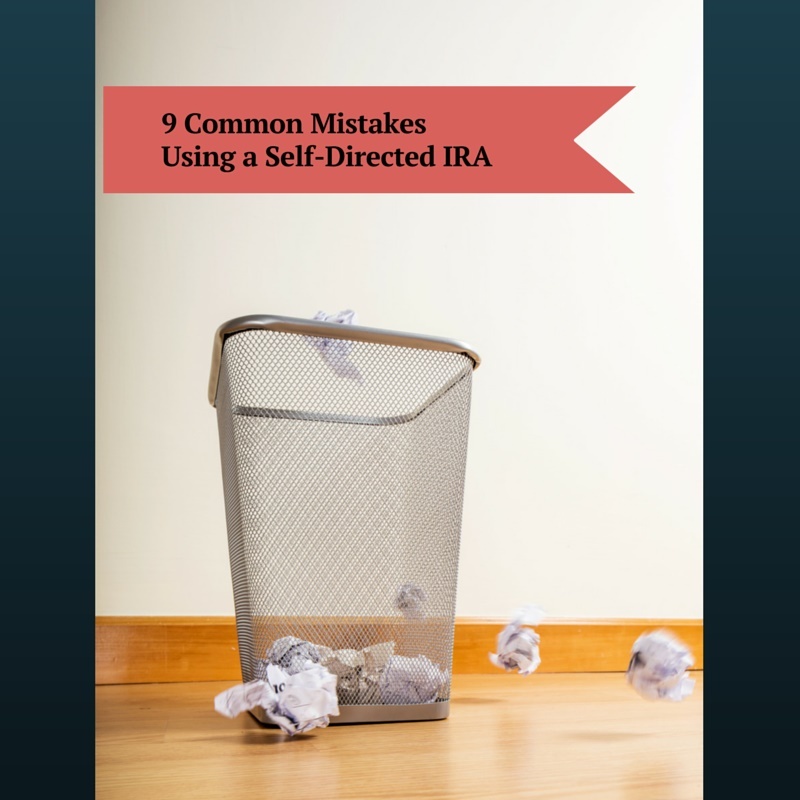
"A goal without a plan is just a wish." - Antoine de Saint-Exupery
12 Smart Actionable Tips For You To Maximize Your Year End Financial Planning Strategies
The end of the year is fast approaching. Now is the time to plan your year end activities so you can make the most of your financial planning and tax strategies.
In a perfect world, you would have a comprehensive financial plan that you review often to ensure you are on track. However, I'm more realistic. I know you are probably not going to do this...
And to be frank, you would not be reading this late so in the year if you had already done your year-end planning.
Having a financial plan is an important step in making sure you have a path to reach your goals. Financial planning is about figuring out where you want to go, putting together a path to get you there, and monitoring your progress along that path to adjust for unexpected events.
While most financial planning should be done continuously throughout the year, many people wait until year end to complete their checklists. This post should help provide you with 12 immediate actions you can take to get up to speed on your financial planning before year end.
Maximize Your Traditional and Roth IRA Contributions
Contributing to your Traditional IRA or Roth IRA each year should be an important part of your retirement strategy. This allows you to save for your retirement with preferred tax treatment on your investments. Not only is this the cornerstone of a solid financial plan, but it can also provide you with tax benefits today.
Each year you are allowed to contribute a certain amount to your Traditional or Roth IRA. These amounts will depend on your income. In the tax year 2018, individuals can contribute up to $5,500 plus an additional $1,000 for individuals who have reached age 50+. While this may seem like an insignificant amount, over the course of 30 years with no growth the amount would equal $165,000. If you use a growth rate of only 5%, you would have $389,000 at the end of 30 years just by contributing $5,500 a year. This could change your retirement lifestyle just by contributing a small amount each year to your IRA.
You should also consider whether you are going to contribute to a Roth IRA or a Traditional IRA. Depending on a number of factors including your income and whether you are an active participant in your company’s retirement plan, you may not be able to contribute to an IRA. If you want more details on the rules regarding how much you can contribute or whether you are eligible, you can find out more information in this 2018 Tax Reference Guide.
Maximize Your 401(k) , 403(b), or 457 Employer Retirement Plan
If your employer offers a group retirement plan to you as one of your benefits, it is a good idea to consider contributing to it each year. In many ways, having access to contribute to a company 401k plan is the same as contributing to an IRA. However, the contribution limits are much higher. In 2018, you can contribute up to $18,500 plus an additional $6,000 if you have reached age 50+. Your employer can contribute up to an additional $36,500 for a total of $55,000.
Many employers offer a generous match, which is based on your contributions. If your employer matches your contributions, you would be foolish to forego this match. It is essentially free money. Don’t think twice, take it.

Let me put this in more concrete terms since there are still people out there who will be second guessing this idea. Many companies offer a 1:1 match. Let’s say you work for ACME making widgets and their 401k plan matches 1:1 up to 3%. If you make $100,000 a year and you contribute $3,000 to your company 401k plan, the company will match your $3,000 with an additional $3,000 making your total annual contribution of $6,000. You contributed $3,000 and now you have $6,000. That is a return of 100% in one year. I am not aware of any other place where you can get 100% return on your money consistently.
(BTW if you are aware of any place to get 100% consistently, I’ll give you my private phone number)
In addition to this great return on your money (assuming your employer provides a matching contribution), you also get a tax deduction for the amount you contributed to your company 401k plan. I do not agree with all of the US government’s tax policies, but this one is one of their better ideas. Make sure you maximize your 401k contributions by year-end. You can get more information about 401k contributions in this 2018 Tax Reference Guide.
Year End Tax Loss Harvesting
If you have a portfolio of different investments, most likely some will have gains and some will have a loss on paper. The gains or losses are not realized until you sell your investment. If you have capital gains at the end of the year, you will have to pay capital gains tax on those gains. However, if you have offsetting losses in your accounts that could be sold by year end, you could realize these losses to neutralize or minimize your gains.
Let’s say you have a small loss on a S&P 500 index ETF in your account, you want to take advantage of this tax harvesting strategy, but you don’t want to reduce your equity exposure. You could sell the shares to realize the loss, then buy back shares of a different (but similar) ETF or mutual fund. Alternatively, you could wait to repurchase the shares of the same ETF after 30 days. This 30 day rule is called the "Wash Sale Rule". If you repurchase the same investment within the 30 days, the loss will be disallowed.
Interestingly enough the “Wash Sale Rule” does not apply to gains, so if you have losses and you want to minimize your gains for future planning purposes, you could sell your gains and immediately buy back the investment to realize the gains. This will raise your cost basis on the investment.
Update Your Beneficiaries
When it comes to planning errors, one of the most common ones we see is forgetting to update the beneficiaries on your IRA, 401k, trust, insurance policies and/or estate plan. It is so common because it is “Out of sight. Out of mind”. When people initially designate the beneficiary of the account, they rarely go back to check or update those names.
There are very few certainties in life, but change is one of them. People get married, divorced, have children, reassess their estate plans, etc. All of these events are cause to reassess your beneficiaries.

An example of “what not to do” is two people get married. They decide to name each other as beneficiaries of their insurance policies. A few years later they get divorced. Then each one remarries. A few years after that, one of the divorcees dies. Unfortunately, they forgot to update the beneficiary on their insurance policy. So the proceeds of the life insurance policy go to the ex-spouse, not the current one. This is not what was intended, but because they didn’t update the policy beneficiary, there is little they can do to make the change after the fact. Even if the will states the intentions correctly, the IRA beneficiary would take precedence.
I have seen this happen many times. Don’t let this happen to you. Review your beneficiaries each year to make any necessary updates.
Create or Update Your Estate Plan
Creating a comprehensive estate plan is essential to any long-term financial plan. You may not care what happens to your money when you pass, but your family will. Make sure your wishes are met by detailing them in your will, your accounts, trusts, and other estate planning tools.
The probate process is long and can be costly. If you want to minimize the legal costs to your family, make sure you have put a lot of thought into your estate plan. Finding the right estate planning attorney can make this process a lot easier.
Another consideration of the estate planning process is tax savings. The federal gift and estate tax exemption is $11.18 Million in 2018. Unless you have assets over these amounts, you probably won’t have to worry about federal estate taxes. However, you may have to worry about state estate taxes. Each state has different amounts, so please check your state for their estate tax limits.
Required Minimum Distribution (RMD)
Once you reach the age of 70.5 years old, April 1st of the following year you will be required to take annual distributions from your qualified plans (IRA, 401k, 403b, 457 etc). These amounts are based on an actuarial table found on the IRS Website here. The distribution requirements should increase each year as you age, so while you may want to extend the payment of your taxes as long as possible, you may also consider timing the distribution so that you minimize your taxes with each distribution.
If you don’t withdraw enough to meet the required RMD, you will get penalized 50% of the amount you were supposed to withdraw but didn’t. This is a heavy penalty to pay for missing the deadline. Make sure you take you annual RMD.
Provide Fair Market Valuations to Your Retirement Account

I know, I’m throwing you a curveball. If you only hold publicly traded securities in your IRA, 401(k), 403(b), or 457, then you can ignore this item. However, if you hold alternative investments in your retirement account, then you will need to make sure you provide your custodian with annual Fair Market Valuations of each asset by the end of the year. This is an important requirement, and if you have never invested outside the stock market before, then you should not wait to the last minute to get these valuations from your investment sponsor.
Spend Your Flexible Savings Account By Year End
Each year you are allowed to contribute to a Flexible Spending Account up to $2,650. The benefit you get from these contributions is you don't pay taxes on these funds and you can use the funds to pay for medical or dental expenses. However, you will need to spend this money by the end of the year or lose it. So take this chance to purchase all the health related items by the end of the year so you don't lose the benefit.
Make Your Charitable Donations
Donating to a worthy cause has multiple benefits. It makes you feel good inside and it also provides you with some tax benefits. You can donate cash, items or highly appreciated assets such as stock or real estate. These donations can have some tax benefits if the charity qualifies. So make your gifts before the end of the year.
Make Contributions to Your Health Savings Account

If you have a High-Deductible Health Plan then you may qualify to open a Health Savings Account (HSA). These accounts are a great way to save and they have one of the best tax treatments available from the US government. Contributions to a HSA plan are tax deductible and qualified distributions can be withdrawn tax-free. Effectively, you are able to fully deduct your medical expenses from your income.
Here are the HSA contributions limits for 2018.
In addition to this, the distributions can be made any time after the expense is paid. so you could wait 20 years before taking the qualified distribution, allowing your funds to appreciate during that time. These funds can be invested in virtually any investment, so if you have a particularly interesting investment strategy, you can consider it for this type of account. You should note that many financial firms do not offer this type of account due to administrative costs on their part. There are a number of financial service firms and banks that will offer you the account, but you should shop around to find one that works for your needs.
Review Your Investments
End of year planning is a good time to review your investments and update your family’s balance sheet. Update your valuations and compare these to your financial plan to make sure you are on track to meet your retirement goals.
Reviewing your investment portfolio at the end of the year is a good strategy. However, you should be reviewing your portfolio on a more consistent basis. Or if you don;t have the time to actively review your portfolio, then you should consider hiring an investment advisor to manage your portfolio for you.
If you don't know where you are going, how do you know when you get there?
Meet With Your Tax Advisor Before The End of The Year
Most people only contact their tax advisor when they want to file their taxes. This is fine, but you should get more out of your relationship with the person who knows the most about your financial situation.
You should ask your tax advisor about actions such as,
- Should pay for expenses in this year vs waiting until next year,
- Does it makes sense to set up a retirement plan, or
- What potential tax reform in the following year may impact your tax situation.
Contact your tax advisor before year end to plan ahead. If you want to minimize your taxes, this is a great step to take before year end. If you own and operate your own business, then you should be having these discussions with your tax advisor more often than just once a year. If your tax advisor does not offer these services, then you should find one who does.
Start Planning for Next Year Today
Start planning for next year. Many people are thinking about their New Year's resolutions, but most of them are not planning out the next year from a financial or tax perspective. Take this time to review your financial plan and your potential tax situation for next year.
The best time to start your planning for year end is in early October. Some strategies can be done quickly, and some can take a bit longer to complete. It is always best to not try to complete these at the last minute.
The best plan is one that is being actively followed. If you want to make the most of your financial planning, then planning ahead is key. Stay on top of your annual planning responsibilities. If you feel you need extra help in that area, don't hesitate to contact us about our financial planning services.

Looking for More Information About Self Directed IRAs???
Get this Free Report, 9 Common Mistakes Investors Make Using a Self-Directed IRA.
About Innovative Advisory Group: Innovative Advisory Group, LLC (IAG), an independent Registered Investment Advisory Firm, is bringing innovation to the wealth management industry by combining both traditional and alternative investments. IAG is unique in that they have an extensive understanding of the regulatory and financial considerations involved with alternative investments held in self directed IRAs and other retirement accounts. IAG advises clients on traditional investments, such as stocks, bonds, and mutual funds, as well as advising clients on alternative investments. IAG has a value-oriented approach to investing, which integrates specialized investment experience with extensive resources.
For more information, you can visit: Innovative Advisory Group
About the author: Kirk Chisholm is a Wealth Manager and Principal at Innovative Advisory Group. His roles at IAG are co-chair of the Investment Committee and Head of the Traditional Investment Risk Management Group. His background and areas of focus are portfolio management and investment analysis in both the traditional and alternative investment markets. He received a BA degree in Economics from Trinity College in Hartford, CT.
Disclaimer: This article is intended solely for informational purposes only, and in no manner intended to solicit any product or service. The opinions in this article are exclusively of the author(s) and may or may not reflect all those who are employed, either directly or indirectly or affiliated with Innovative Advisory Group, LLC.
